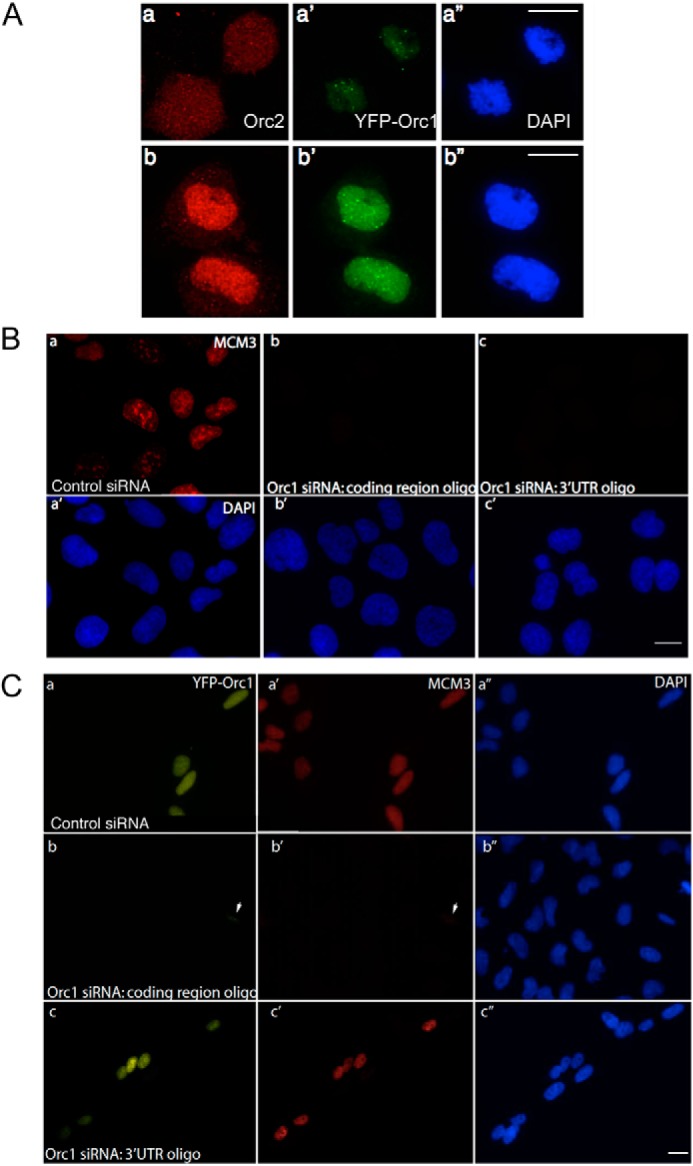FIGURE 5.

Orc1 shows extensive mitotic chromosome association before Orc2, and depletion of Orc1 causes loss of Mcm3 from chromatin. A, YFP-Orc1 localization relative to Orc2 localization in U2OS cells. In late mitosis YFP-Orc1 appears on chromatin in the daughter nuclei prior to Orc2, which remains in the cytoplasm (panels a–a″), and then Orc2 localizes to nuclei after telophase (panels b–b″). Orc2 was detected using the pAb205 antibody. Scale bar equals 5 μm. B, prominent MCM3 staining (red) on chromatin in control (luciferase) siRNA-treated cells (panel a) as compared with loss of MCM3 staining in Orc1 siRNA-treated U2OS cells using siRNA targeting the coding region (panel b) or the 3′UTR of endogenous Orc1 (panel c). DNA was stained with DAPI. Scale bar represents 5 μm. C, labeling of MCM3 on chromatin in control (luciferase siRNA)-treated U2OS cells stably expressing YFP-Orc1 (panels a and a′). YFP-Orc1 cell line treated with Orc1 siRNA targeting the coding region of endogenous and exogenous Orc1 shows loss of MCM3 from chromatin (panels b and b′). The arrowhead denotes a cell showing partial knockdown of Orc1 (as seen by YFP-Orc1) showing low levels of MCM3 loading. YFP-Orc1 cell line treated with Orc1 siRNA targeting the 3′UTR of endogenous Orc1 (panels c and c′). Note the rescue of MCM3 loading onto chromatin showing that siRNA-resistant exogenous YFP-Orc1 can functionally complement endogenous Orc1.
